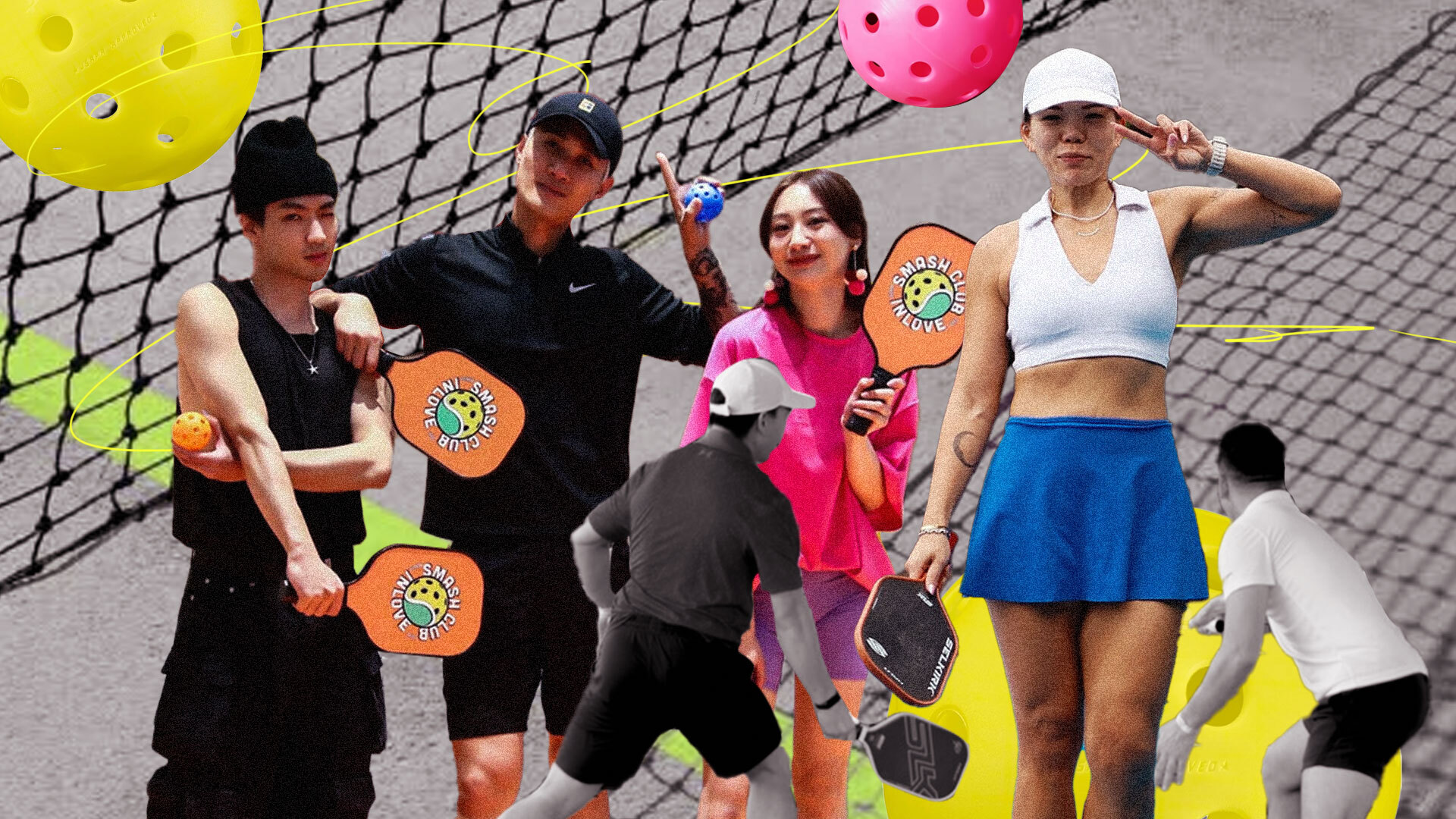On a sunny Saturday afternoon over cloudy skies and soaring humidity, 33-year-old Jack Leong is playing pickleball at his usual court in Kuala Lumpur (KL). Over the past two months, he has committed to a weekly pickleball schedule playing — or in pickleball lingo, “dinking” — with friends, colleagues, and even strangers.
“It’s so fun, easy to pick up, and it kinda feels like a mix of badminton and ping pong. I play both so pickleball feels familiar. Plus, there’s a social element to it. You make friends quickly and everyone is down to play,” said Leong between wiping down streams of sweat and chugging water as he took a much needed breather before his next game.
It’s everywhere

Leong joins many Malaysians who are riding the pickleball wave that’s sweeping through the nation. The signs are obvious in all facets surrounding the sport. Venues like Pickle Social Club at Kuala Lumpur Golf and Country Club (KLGCC), KL City Pickleball, as well as Hyprground and Sportizza locations in the suburbs of Subang Jaya and Petaling Jaya require bookings weeks — sometimes even months — in advance. In a similar vein, new courts are mushrooming in the states of Johor, Selangor, and across the South China Sea in Sarawak in East Malaysia. In fact, pickleball first surfaced in Malaysia in 2019, in Miri, a quaint coastal city in Sarawak close to the neighboring country of Brunei.
Across Instagram and Facebook, clubs and groups are forming for newcomers and seasoned players alike to congregate and play in casual matches, training sessions, and tournaments. Acquiring pickleball gear is easy too; paddles and balls can be bought online or conveniently at physical storefronts.
Even those who don’t play the sport likely have friends who are into it, dedicating themselves to spreading their wins, fumbles, and post-game glow in a consistent cadence on social media or IRL. Look up any pickleball-related hashtags and you’ll be bombarded with a never-ending stream of content covering everything from tutorials to paddle recommendations. Pickleball is most certainly in, and it’s a massive hit among Gen Zs and millennials, thanks in large part to the game’s social nature, fashionable gear, and the undeniable clout it carries.
There’s no denying pickleball’s widespread popularity, which has caught the government’s attention. Earlier this month, the Selangor State Government announced the inclusion of pickleball as a medal sport in the 2026 Malaysia Games, while committing to invest 1 million RM (about 220,000 USD) to build community courts in public parks.
Beyond KL

So it’s evident that pickleball is flourishing in Malaysian cities, despite having once been thought of as just another fleeting fad among millennials, as seen with dodgeball and frisbee. Venues and communities centered around the racket sport are taking shape in major Chinese metropolises like Hong Kong and Shanghai too. Shanghai’s first pickleball court, part of the InLove Sports Club, opened in 2023 in Huangpu District. On social media, interest groups on Douyin are actively promoting the sport through social engagements including pop-up events in malls and public spaces across China. This also includes tips on mastering serves, returns, and even choosing the right equipment.
Meanwhile, Hong Kong recently welcomed Bay Pickle in Causeway Bay, a pickleball social club blending sports and entertainment. The club offers professional-grade facilities with features such as beginner-friendly programs and a community-oriented environment. Beyond play, Bay Pickle emphasizes “sportainment” by integrating retail and dining into the pickleball experience, allowing players to do everything from shopping for the latest in pickleball apparel to fueling up at in-house F&B options, all under one roof.

The same but different
Pickleball was invented in the summer of 1965 on Bainbridge Island, Washington, by three friends — Joel Pritchard, Bill Bell, and Barney McCallum. They were looking for a game to entertain their families and improvised with a badminton court, a perforated plastic ball, and handmade wooden paddles.
The game is a blend of badminton, ping pong, and tennis, designed to be simple and fun for all ages. But it wasn’t until the last few years that pickleball became a familiar name in Asia, carving out a niche in the region’s diverse sporting landscape, particularly among players looking for a worthy alternative from badminton and ping pong.
Although badminton and ping pong continue to endure the years in cultural relevance, especially in China and Malaysia, the similarities between them and pickleball are likely why the latter has been so well-received as of late.
For example, rules are easy to grasp so the learning curve isn’t steep, while the playing style focuses on quick reactions, precise shot placements, and nimble footwork, just like badminton and ping pong. The hitting paddles are larger than the ones in ping pong, but the surface is just as solid. And the dimensions of a pickleball court are closer to a doubles badminton court, with distinct service areas and a central net dividing the field of play.
It’s all familiar territory.
What’s next?
So far, the signs are pointing to pickleball cementing its status as a bonafide racket sport that will stand the test of time. With its accessibility, fast-paced gameplay, and a strong sense of community, it’s poised to continue to attract players of all ages and skill levels. There’s even the possibility of it becoming an Olympic event in the future.
“I think pickleball is here to stay. People are trying it out and that’s good, I know it’s maybe a popular thing to do now. But the ones who are really into it will keep playing, including me,” Leong confidently said.
Banner image by Haedi Yue.
















